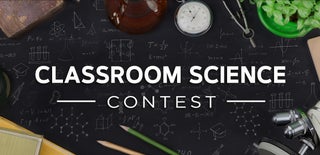Introduction: Plankton & Microplastic Collection Net
MakerBay Team worked with the students of the Lingnan University (their background are social science, business, art) on a Plankton and Plastic Ocean Expedition. Over 1-day boat trip in Sai Kung (Hong Kong), students learnt about
- Citizen Science
- Biology and Biodiversity
- Bamboo spitting
- Scientific Tool Design
- Rapid Prototyping
and
- Team working
- Leadership
- Creativity
This project is recommended for grades 4 and up.
Why Study Plankton and Plastics?
Do you know around 70% of the oxygen on earth is produced from phytoplankton in the ocean? Planktons play an important role in maintaining the earth's equilibrium. They are also the food of fish and filter feeders, so it is also the foundation of our ecosystem.
Watch this video to find out more about planktons and how scientists are studying them. And also participate in the PlanktonPlanet citizen project to help mapping plankton around the world.
Be a Planktonaut! — PlanktonPlanet from PlanktonPlanet on Vimeo.
Why we need to study ocean plastics?
Supplies
Biology Equipments:
- USB microscope that works for Mac and PC (10X - 400 X)
- Petri Dishes
- Eyedropper
- Tweezer
- Labels and pencil
- Filter paper
- Filter funnel
- Bottles for storing water samples
- Eppendorf (optional)
- Sieve
Tools and Materials for net making:
- 1mm mesh fabric
- 0.5mm mesh fabric
- Lead weights
- Flottation
- Ropework needles
- Rope
- Bamboo
- Scrap Wood
- Zip ties
- Nuts and Bolt
- Tape
- Drill + dill bits
- Hot glue gun and glue stick
Miscellaneous:
- Laptop and Laptop Charger
- Handouts
- Post-it
- Extension Cord
- Paper and Pen
- Highlighters
Step 1: Plan Route and Schedule
We planned to take sample from 2 different routes. One near the coast (Red line), another one further away from coastline (Blue line). Each route have 5 checkpoints. On each boat, several MakerBay Team members using Strava.app to measure the distance, and track speed.
Step 2: Design Sketch and Feedback
Groups make drawings of their own designs, present and give feedback to each others.
Step 3: Making the Net and Testing
We encourage the use of eco materials such as bamboo to make the net design.
Net Mouth:
Some groups design the net as a loop mouth, some have rectangle shape mouth. One group drill holes on one bamboo to let water get into the net.
Mesh:
They also use different mesh. Some of them use nylon mesh, or cotton cloth to make a soft net. While some use metal mesh to keep the net in shape and use the nylon mesh at the end of the net.
Cod End:
nylon mesh sew at the end
plastic bottles with holes
Buoyancy:
add floatation at the mouth
add lead weight at the end tip of the net
Dimensions of the different devices:
Team, Height mm, Width mm, Length mm, Mesh gap mm, "Water line at mouth mm
- Team Zhanyl,400,400,900,Fabric,250
- Team Takhmina,350,440,1100,Metal,300
- Team Remi,450,420,900,Fabric,150
- Team Abado,150,700,300,Fabric,90
- Team Help,250,840,500,Metal & Fabric,600
- Team Gary,230,330,140,Fabric & Metal,200
- Team Claire,220,400,650,Metal,240
Step 4: Collect Samples
Measure the net mouth area and input data in spreadsheet.
Boat move in an average speed of 4.1km/h for 1.59km
However, because of limited time, we only do one sampling in checkpoint 1.
Step 5: Retention of Samples From the Net
We rinse the net to collect the sample. Then filter it with coffee filter and filter funnel.
We then put the filter with samples on it in labelled petri dishes.
Challenges:
The sample is too diluted, we only found little amount of planktons under microscope
the coffee filter break easily
I think we need a better way to do the Filtration (or concentration)
Step 6: Image Samples
We tried to observe the samples on filter paper, but the result is not satisfying. We found a lot green algae but the fiber and background of the filter paper make it difficult to find the mostly transparent planktons.
So we resuspended the samples in little amount of water in petri dish. Now we can see better under the USB microscope
This video also demonstrate how to sample microplastics in the marine environment.
Step 7: Identification
Surprisingly, we did not find a lot of plankton. We found 2-3 zooplanktons. We took microscopic images and upload them for identification on iNaturalist.
Observation #1: https://www.inaturalist.org/observations/26446398
Observation #2: https://www.inaturalist.org/observations/26446399
Observation #3: https://www.inaturalist.org/observations/26447099
Observation #4: https://www.inaturalist.org/observations/26447316
Apart from zooplankton, we also found algae, debris of shell, insect wing and plastic thread.
Step 8: Conclusions
- Nylon mesh works better than Polyester cloth when we need to rinse off the samples from the net.
- Adding a rectangle structure at the mouth help stabilise the net and can attach flotation easily.
- The sample size is too small
Step 9: Future Direction
- Design and build a net that can retrieve the samples more easily (may be detachable water sample bottle at the end)
- Design and build a filtration system to concentrate the samples
- Data visualisation - Contract a Heat map using Google Fusion Table from the samples
- Do DNA barcoding to identify the plankton species captured

Runner Up in the
Classroom Science Contest













